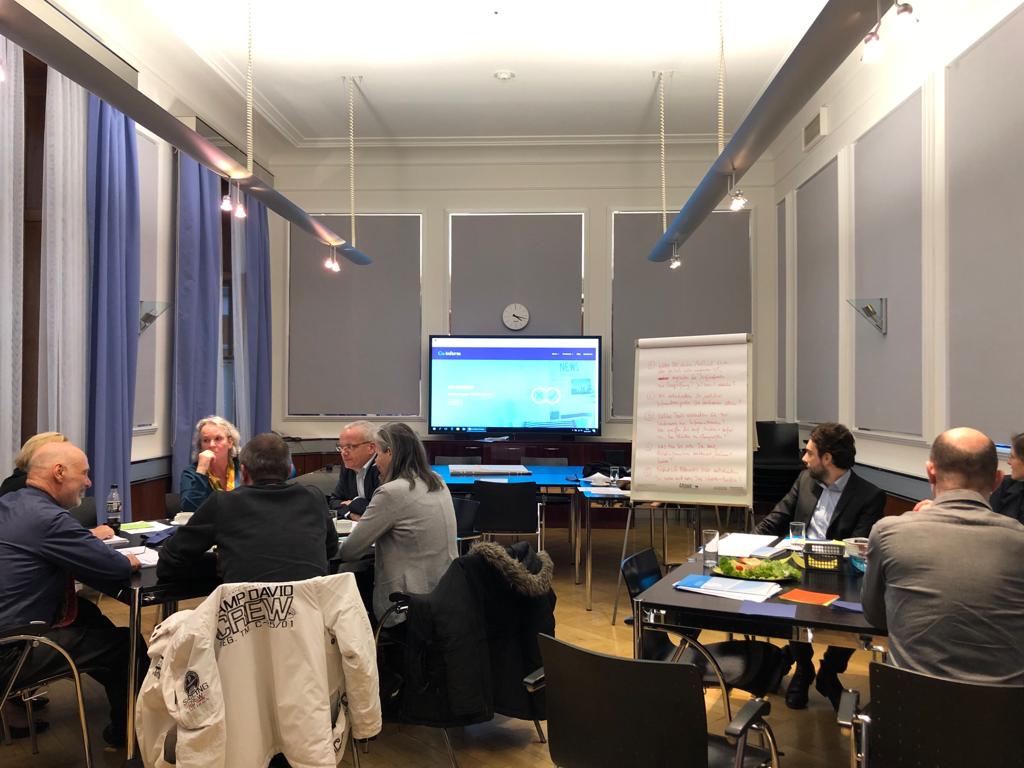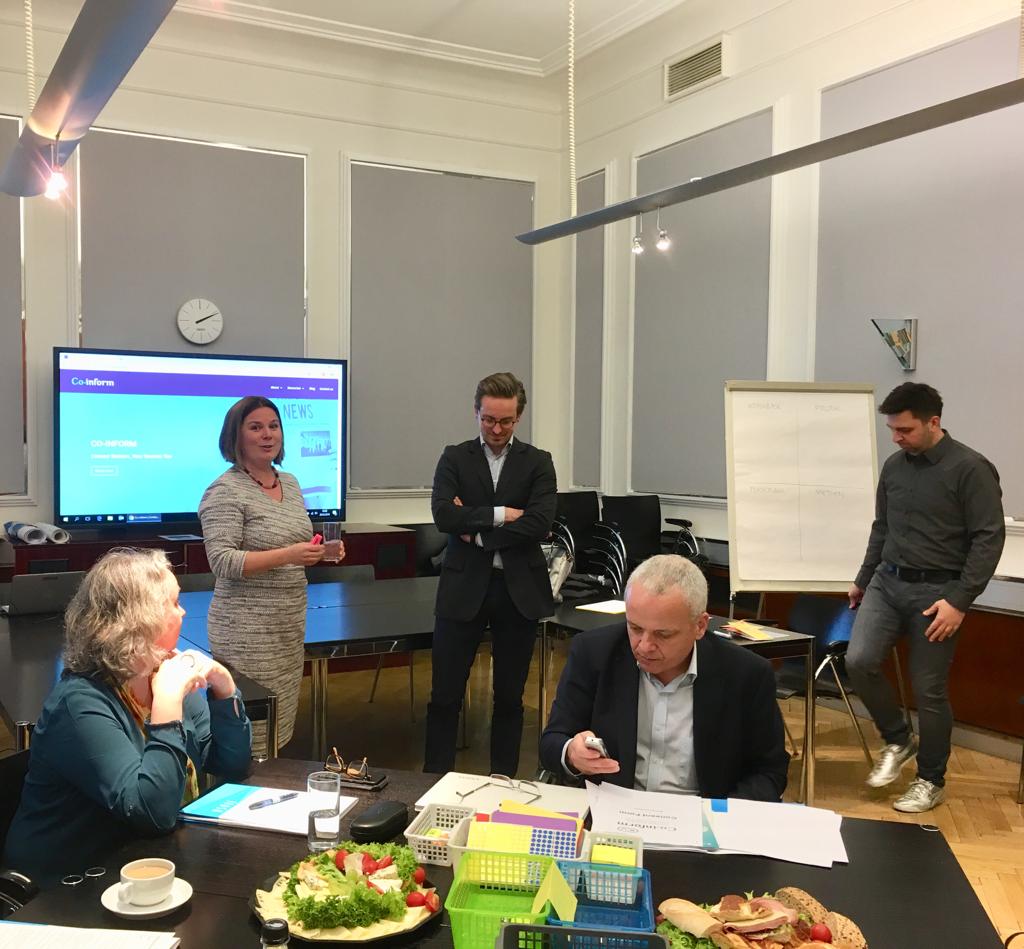Blog
Misinformation about Migration in AustriaAuthor: Dr. Nadejda Komendantova, Research Scholar Advanced Systems Analysis at IIASA

Austria has been a “country of immigration” for decades, given that the annual balance of immigration and emigration regularly shows that the net migration rate is positive. The significant share of the Austrian population are migrants (16%) or people with migration background (23%). During the previous years, asylum seekers accounted for 19% of all migrants and the year 2015 made Austria the 4th largest receiver of asylum seekers in the EU. Vienna has the highest share of migrants among all other regions and cities in Austria and over 96% of all Viennese have contact with migrants in everyday life.
Migration is influencing various areas of life in Austria but especially multifamily housing is getting more heterogenous in terms of cultural, ethnic and religious background of people living there. The impacts of social media on perceptions of migrants is one of the strongest in multi-family housing sector where people with different background, values, needs, origins and traditions are living together and have direct contact in everyday life.
Scientific research shows that not everyday situations and conflicts are influencing attitudes towards migrants but rather opinions and perceptions developed about migrants. Media is playing an essential role in formulation of these opinions and further research is necessary to evaluate the impact of emerging media such as social media and Internet on perceptions of migrants and impacts of these perceptions on conflicting situations in the limited profit housing sector.
Perceptions towards migration are frequently based on a subjectively perceived collision of interests. Perceptions are socially constructed and are influenced by several factors such as socialization, awareness and experience. Perceptions also define what can be seen as improper behaviour. They are influenced by reconditions such as preconceived pictures of the migrants. These preconditions can be a result of information flow or of personal experience. Without being addressed or without further information, preconditions can form prejudices. Preconditions frequently appear in situation with limited information or experience.
Perceptions of foreign characteristics are frequently determined by general sentiments in the media reporting, where misinformation plays a role. Misinformation existed for a long time, but nowadays new technologies and social media facilitated the spread of misinformation, which has the potential to lead to social conflicts. Misinformation can influence attitudes towards migrants as perceptions about migration are influenced by media reporting.

In March 2019 the International Institute for Applied Systems Analysis (IIASA) organized a workshop at the premises of the Ministry of Economy and Digitalization of the Austrian Republic. The focus of workshop was to discuss the impact of misinformation on perceptions of migrants in the Austrian multifamily limited profit housing sector. We selected such focus for three reasons. First, this sector is a key pillar of the Austrian policy on socio-economic development and political stability. Second, the sector makes 24% of total housing stock and more than 30% of total new construction. Third, the sector has a high share of migrants. For example, in the year 2015 in Sozialbau, which is the leading Austrian limited profit housing company, the share of residents with a migration background, such as foreign nationals or Austrian citizen born abroad, reached 38%.
Several stakeholders, including housing sector policy-makers, journalists, factcheckers and citizen participated in this workshop. Among them were the Austrian Chamber of Labor, ALPH companies “Neues Leben”, “Siedlungsgenossenschaft Neunkirchen”, “Heim”, “Wohnbauvereinigung für Privatangestellte, housing service of the municipality of Vienna, as well as the Austrian Association of Cities and Towns, which has 252 members among the total of 2100 local authorities representing 55% of total population in Austria.
The workshop included several innovative methods of stakeholders’ dialogue such as games based on words associations, participatory landscape mapping as well as wish-lists for policy-makers and interactive online “fake news” games. The sessions included the co-creation activities and collection of stakeholders’ perceptions about misinformation, sessions on everyday practices to deal with misinformation, co- creation activities on challenges connected with misinformation, discussions about the needs to deal with misinformation and possible solutions.
During the discussions with workshops participants, we identified three major challenges connected with the spread of misinformation. These are time and speed of reaction, kind of misinformation and whether it affects someone personally or professionally, excitement about the news, the low level of willingness to read as well as the difficulties with correcting information at once it is provided. Many participants believed that they can control the spread of misinformation, especially if misinformation concerns their professional area and spreads within their networking circles or by employees of the same organizations as themselves. Several participants then suggested to check statistical or other corrective measures such as artificial intelligence tools or factchecking. The major challenge is to recognize misinformation and the source of misinformation quickly. This quick reaction was perceived by many as a barrier for corrective measures as participants mentioned that someone really should be an expert to be able to correct misinformation in many areas. Another challenge is that the more exciting the misinformation issue is, the faster it gets being spread around. Corrections might be also difficult because people prefer emotional reach information to fact reach information, or because they prefer pictures to text.
Expectations from policy-makers, journalists, factcheckers and citizen on tools to deal with misinformation were different. The expectations of the policy-makers were mainly connected with the creation of a reliable environment through development and enforcement of regulations, stimulation of the culture of critical thinking and strengthening of the capacities of statistical offices as well as making relevant statistical information available and understandable to everybody. Journalist and factcheckers expectations were mainly connected with the development and availability of tools for verification of information. Citizen expectations were mainly connected with the role of decision-makers, who should provide them with credible sources of information at the official web-sites and organize information campaigns among inhabitants about the challenges of misinformation as well as how to deal with it.
Co-Inform is a H2020 project which aims to create tools for better-informed societies. The stakeholders will be co-creating these tools by participating in a series of workshops in Greece, Austria, and Sweden, taking place over the next two years.
Subscribe to our newsletter
Get our latest project updates, news and events announcements first!

Co-inform project is co-funded by Horizon 2020 – the Framework Programme for Research and Innovation (2014-2020)
H2020-SC6-CO-CREATION-2016-2017 (CO-CREATION FOR GROWTH AND INCLUSION)
Type of action: RIA (Research and Innovation action)
Proposal number: 770302




